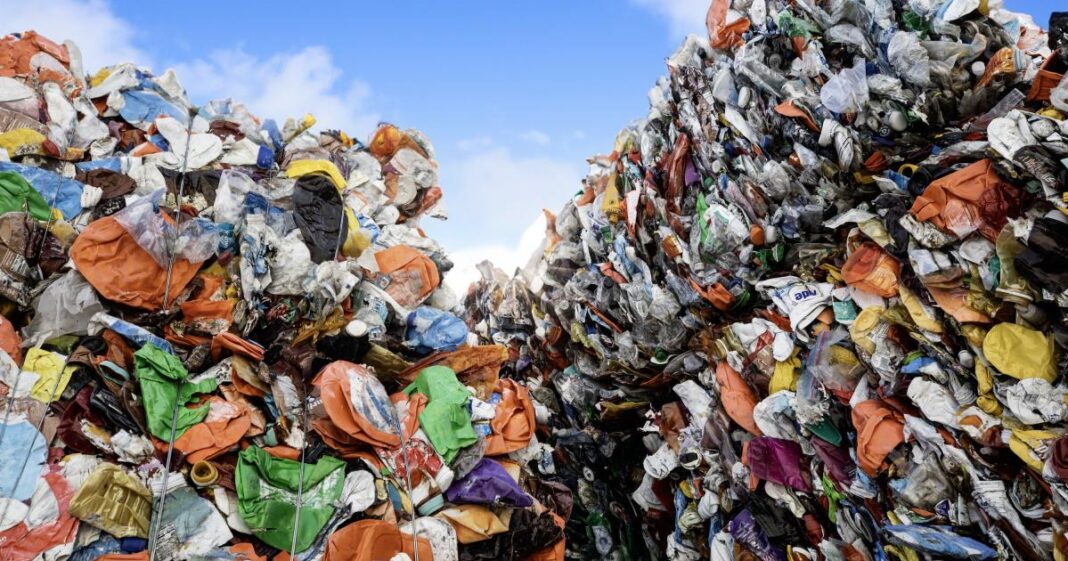This article is sponsored by Eastman.
Head to any supermarket and you’ll see arrays of opaque bottles in vibrant colors containing everything from cleaners to juices to food products. The colorful and opaque plastic they are made from is likely polyethylene terephthalate (PET). In addition to being a blank canvas for product branding, opaque and colored PET is often the best solution for several practical solutions, such as:
- Blocking light and UV rays, protecting contents from damage
- Concealing internal contents
- Offering a lightweight option compared to its counterparts
With such versatility and popularity, what’s the downside? That comes down to recyclability. The eye-catching colorants and light-blocking opacifying agents used in opaque and colored PET make traditional mechanical recycling a no-go. The average materials recovery facility (MRF) isn’t equipped to process or sort this plastic, and it gets landfilled instead.
Yet colored and opaque PET is a valuable post-consumer material if we adapt our systems to make the most of it. And we should because there is immense value there, including these four opportunities:
- Recyclable today: Opaque and colored PET is recyclable. Eastman is actively capturing these materials for recycling today. While recycling data for all colored PET is unavailable, NAPCOR’s (National Association for PET Container Resources) 2021 reclamation data for green PET, the largest category of colored PET with strong demand from reliable end markets, shows us what is possible. Its data estimates 31 percent of green PET available for recycling in the U.S. was processed into clean, recycled material, ready for use in new products. In addition to the developed markets for green PET, Eastman is working hard to provide end markets for all colors. By promoting wider recyclability options, we can encourage material choices that align with sustainability goals.
- Accelerating progress: Eastman is operating a new world-scale molecular recycling facility that will process 250 million pounds of waste plastic annually. We have already secured more than 50 million pounds of non-clear PET feedstock, including colored and opaque materials.
- True circular economy: Molecular recycling technologies enable the transformation of packaging into new food-grade packaging materials, ensuring a material-to-material process. And The Recycling Partnership’s (TRP) PET coalition is specifically investing in projects to increase the collection and sortation of opaque and colored PET. TRP has already awarded three grants to enable processing of more than 6 million pounds of opaque and colored PET, and more grants are planned. Together, we are actively paving the way for a future where packaging waste becomes a valuable resource.
- Alternative to problematic plastic materials: Opaque and colored PET is required to extend the shelf life of various products because its UV properties protect quality and reduce potential food waste. Alternative solutions, such as fully shrink-wrapped packages, present challenges with mechanical recycling streams, hindering the circularity we aim to achieve, ultimately offering more problems than solutions.
High-density polyethylene (HDPE) is another highly recycled material that is used in colored and opaque products, but it uses more plastic for larger bottles compared to PET. Finally, opaque and colored PET provides a viable alternative to materials such as polystyrene (PS)/expanded polystyrene (EPS) and polyvinyl chloride (PVC), which are truly problematic in terms of health, safety and environmental impacts.
Opaque and colored PET presents an opportunity for us to step up and meet the moment. To minimize the impact of these materials and take full advantage of what they offer, we must invest in building new systems and expanding capabilities. Because giving new end markets a chance to develop is how we bridge the gaps to sustainable progress.
The future of PET recycling
True to our principles, we are focused on achieving circularity by expanding recycling for hard-to-recycle materials, such as colored and opaque PET, and creating profitable returns on investments. We are creating a valuable end market for these materials without expectation of subsidization, reducing materials that end up in landfills.
At our Kingsport, Tennessee, molecular recycling facility, more than 75 percent of our feedstock has been contracted or is in negotiation on multiyear agreements with reclaimers, MRFs, brands and others in the PET value chain. We have more than 50 million pounds in inventory — more than half of which is colored and opaque PET.
Join us in expanding the industrywide growth of the recycling system with new programs and technologies. Together, we can drive positive change and embrace opaque and colored PET as a catalyst for a truly circular economy.
